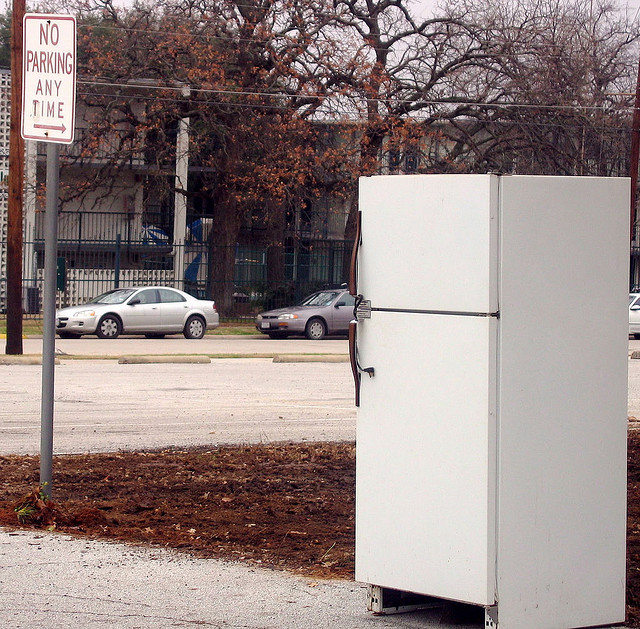
Technology solves problems. But there's usually more than one way to solve a problem. Cars don't have to run on internal combustion — and they don't have to look like smoothly curved pods. (In fact, when I was in grade school, they didn't.) Our electric grid isn't the result of a rational discussion about ideal technology. Instead, it was built partly based on convenience and speed, and partly based on cost.
Basically, there are lots of ways to solve a problem and for almost every tool we use there's an alternative we chose (somewhere along the line) to not use. I'm working on my second column for The New York Times Magazine, which will come out in September. In the course of researching that, I stumbled across a really fascinating research paper about the history of the refrigerator. See, the electric fridge we're all familiar with wasn't the only option in home refrigeration. In the 20th century, the low hum of the electric refrigerator competed with a silent version powered by natural gas.
"How the Refrigerator Got its Hum" is an article written by science historian Ruth Schwartz Cowan. It was published in 1985, in a book called The Social Shaping of Technology. The article traces the development of the refrigerator and the story of why we use electricity, rather than natural gas, to cool our food today. I couldn't fit it into my NYT column, but it's absolutely fascinating and well worth the read. The key point of Cowan's article: Our world is full of "failed machines", technologies that worked just fine, but that we don't use today.
These are not junked cars and used refrigerators that people leave along roadsides and in garbage dumps, but the rusting hulks of aborted ideas; patents that were never exploited; test models that could not be manufactured at affordable prices; machines that had considerable potential, but were, for one reason or another, actively suppressed by the companies that had the license to manufacture them; devices that were put on the market, but never sold well and were soon abandoned. The publications of the Patent Office and the "new patents" columns in technical magazines reveal that the ration of "failed" machines to successful ones is high, although no scholar has yet devised a formula by which it can actually be determined.

No comments:
Post a Comment